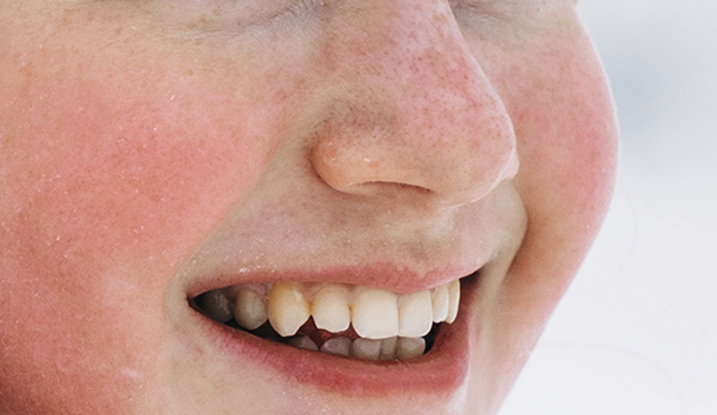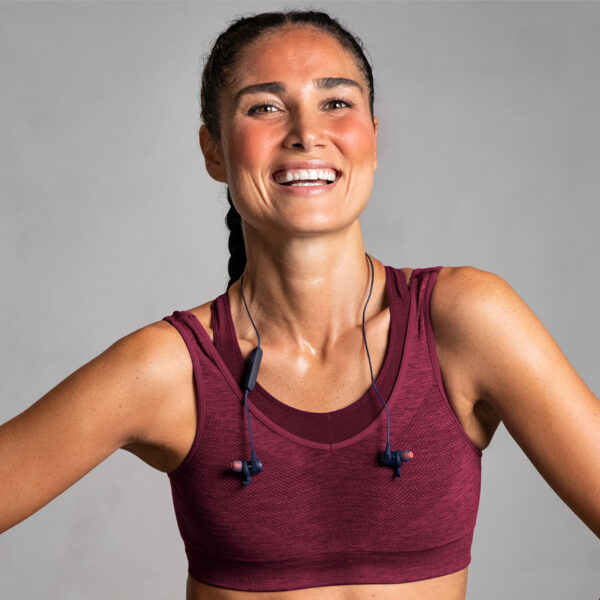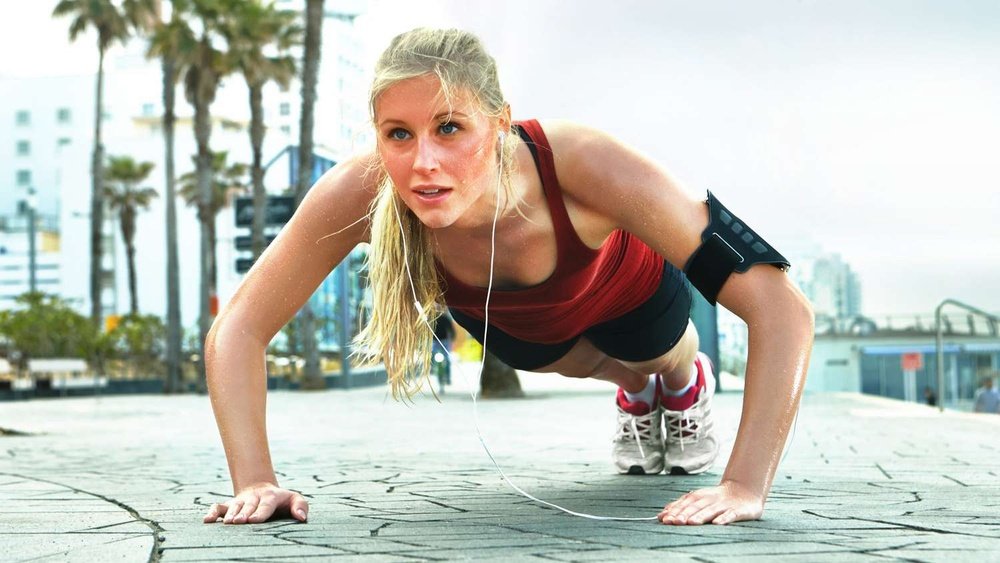Have you ever noticed your face turning bright red right after a workout and wondered what that means? Facial flushing after exercise is a common experience, but understanding why it happens can help you feel more comfortable and confident during your fitness routine.
Your flushed face is actually your body’s way of cooling down and delivering oxygen to your muscles. But when does this natural reaction become something to watch out for? You’ll learn exactly what causes facial flushing after exercise, how to manage it effectively, and when it might be a sign to slow down or seek help.
Keep reading to uncover the meaning behind that red glow and make the most of your workouts without worry.

Credit: my.clevelandclinic.org
Causes Of Facial Flushing
Facial flushing after exercise happens due to several natural body responses. Understanding these causes helps explain why your face turns red during physical activity. The main reasons include increased blood flow, the body’s cooling process, and chemical reactions in your muscles. Each factor plays a role in making your skin appear flushed and warm.
Increased Blood Flow
Exercise makes your heart beat faster. This sends more blood to your muscles and skin. Blood vessels near the surface of your skin widen. This allows more blood to flow through them. The extra blood causes your face to look red and warm. This process helps deliver oxygen and nutrients to your muscles.
Thermoregulation Effects
Your body temperature rises during exercise. To cool down, blood vessels widen to release heat. This is called vasodilation. Heat moves from your core to the skin’s surface. Sweating also helps cool your body. The combination of heat and blood flow makes your face flush. This is your body’s way to keep a safe temperature.
Histamine Release
Intense exercise can trigger histamine release in muscles. Histamine is a chemical that widens blood vessels. This widening adds to the redness in your face. It also helps increase blood flow to tissues. Histamine release can cause itching or a warm sensation. This is a normal response to physical stress on your body.

Credit: forefrontdermatology.com
Normal Vs Concerning Flushing
Facial flushing after exercise is common, but not all redness is the same. Distinguishing between normal and concerning flushing helps you stay safe. Normal flushing means your body is cooling itself. Concerning flushing might signal a health problem. Watch your body’s signals carefully during and after workouts.
Typical Post-exercise Redness
Normal redness happens because blood vessels open wide. This brings more blood to the skin’s surface. Your face looks red as heat leaves your body. This process helps cool you down. The redness usually fades within a few minutes. It does not cause pain or other symptoms.
Signs Of Overexertion
Overexertion happens when you push too hard. Along with redness, you may feel dizzy or very tired. Your breathing could become fast or hard. You might feel nauseous or weak. These signs mean your body is stressed. Stop exercising and rest to avoid harm.
Heat Exhaustion And Heatstroke
Heat exhaustion is more serious than simple redness. You may sweat a lot and feel cold or clammy. Your skin might turn pale or stay red. Headaches and confusion can occur. Heatstroke is an emergency. It causes very high body temperature and loss of consciousness. Seek medical help immediately if these happen.
Common Risks Linked To Flushing
Facial flushing after exercise is common but can sometimes signal risks. It happens as blood vessels expand to cool the body. Most often, this is harmless. Yet, certain factors linked to flushing need attention. Understanding these risks helps keep workouts safe and comfortable.
Dehydration Impact
Dehydration makes flushing worse. When the body lacks water, blood thickens and vessels strain. This raises body temperature and redness. It can also cause dizziness and fatigue. Drinking water before and after exercise reduces this risk. Staying hydrated keeps blood flowing smoothly and skin calm.
Underlying Skin Conditions
Some skin problems cause intense flushing. Conditions like rosacea or eczema make the skin sensitive. Exercise increases blood flow, triggering redness and irritation. These conditions may require special care during workouts. Using gentle skincare and avoiding triggers can help manage symptoms.
Exercise Intensity Concerns
High exercise intensity can lead to excessive flushing. Pushing too hard raises heart rate and body heat quickly. This may cause discomfort, nausea, or dizziness. Listening to your body and pacing yourself prevents overexertion. Moderate exercise levels keep flushing mild and safe.
Managing Facial Redness After Exercise
Managing facial redness after exercise helps you feel more comfortable and confident. Redness occurs as blood vessels expand to cool the body. Some simple steps reduce flushing and soothe your skin. Consistent care improves how your face looks post-workout.
Gradual Cool Down
Slowly lower your exercise intensity to let your heart rate drop. A quick stop keeps blood rushing to your face, increasing redness. Walk or stretch for five to ten minutes to cool down. This helps your body temperature return to normal gently. A gradual cool down also prevents dizziness and discomfort.
Hydration Tips
Drink water before, during, and after exercise to stay hydrated. Dehydration makes flushing worse and slows body cooling. Sip small amounts regularly instead of large gulps. Avoid sugary or caffeinated drinks as they can dehydrate you. Proper hydration supports healthy blood flow and skin balance.
Clothing And Environment
Wear loose, light-colored clothes to keep your skin cool. Tight or dark clothes trap heat and worsen redness. Exercise in a cool, shaded place or indoors when possible. Early morning or late evening workouts avoid the hottest times. These choices help control body temperature and reduce facial flushing.
Skin Care For Post-workout Flushing
Post-workout flushing often leaves the skin red and sensitive. Proper skin care helps calm and restore the skin quickly. Taking care of your skin after exercise reduces discomfort and supports healing. A good routine focuses on soothing, protecting, and avoiding harm to the skin. This helps maintain a healthy complexion and prevents long-term irritation.
Soothing Treatments
Cooling the skin after exercise reduces redness and heat. Use a cold compress or splash cool water on your face. Gentle facial mists with calming properties can refresh the skin. Avoid rubbing or scrubbing the flushed skin. Lightly pat the skin dry with a soft towel to prevent irritation.
Calming Ingredients To Use
Choose skincare products with soothing ingredients to calm redness. Aloe vera helps reduce inflammation and cools the skin. Oatmeal extracts protect and soothe sensitive skin. Ceramides strengthen the skin barrier and lock in moisture. Hyaluronic acid hydrates deeply without causing irritation. These ingredients help the skin recover after intense activity.
Avoiding Irritants
Steer clear of harsh products that worsen flushing. Alcohol-based toners and astringents dry out and irritate sensitive skin. Fragrances and strong preservatives may cause stinging or redness. Avoid hot water or aggressive scrubbing after exercise. Use gentle, fragrance-free cleansers to protect the skin’s natural barrier.
When To Seek Medical Help
Facial flushing after exercise is common and usually harmless. It shows your body is working to cool down. Sometimes, redness lasts longer or comes with other signs. Knowing when to seek medical help is important. It ensures your health and safety during workouts.
Persistent Redness
Redness that stays for hours after exercise is unusual. It may indicate skin irritation or an underlying condition. Watch for swelling or itching with the redness. Persistent flushing needs a doctor’s check to find the cause.
Severe Symptoms
Stop exercising if you feel dizzy, nauseous, or have chest pain. Trouble breathing or a rapid heartbeat also needs urgent care. These signs may show a serious problem. Immediate medical help can prevent complications.
Professional Diagnosis
Doctors can check your heart and skin health. They may run tests to rule out allergies or infections. A proper diagnosis guides the right treatment. Always share your exercise habits and symptoms with your doctor.

Credit: www.reddit.com
Frequently Asked Questions
Why Does My Face Flush After Working Out?
Your face flushes after working out due to increased blood flow and widened blood vessels. This helps cool your body by releasing heat through the skin. Facial flushing is normal unless accompanied by dizziness or breathing issues, which require medical attention.
Why Does My Face Flush After Exercise?
Facial flushing after exercise is caused by increased blood flow and body heat release. Your blood vessels widen to cool your body, sending more blood to the skin’s surface, making your face appear red and flushed. This is a normal physiological response.
Is Facial Flushing After Workouts Dangerous?
Facial flushing after workouts is usually harmless. However, if redness comes with dizziness, nausea, or breathing issues, stop exercising and seek medical help. These symptoms could indicate overexertion or heat-related illness requiring immediate attention.
How Can I Reduce Facial Redness Post-exercise?
To reduce redness, cool down gradually and stay hydrated. Exercise in cooler environments and wear light, breathable clothing. Applying a cool compress after your workout can soothe the skin and help minimize flushing.
Conclusion
Facial flushing after exercise is usually a normal body response. It shows your heart and blood vessels working to cool you down. Simple steps like cooling down slowly and staying hydrated can help reduce redness. Watch for serious symptoms like dizziness or trouble breathing.
These signs mean you should stop and get medical help. Understanding your body’s signals keeps your workouts safe and comfortable. Keep moving, but listen closely to how you feel.
 Skip to content
Skip to content 